Miskitu Migration to Costa Rica after the Hurricanes
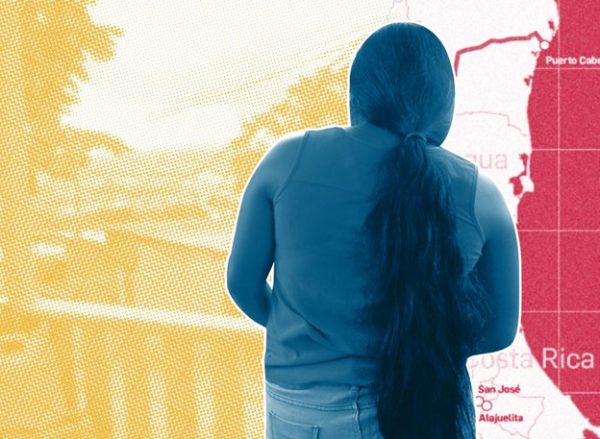
Eta and Iota destroyed their communities in Nicaragua and forced dozens of indigenous people to migrate to where almost no one speaks their language and they are unable to find employment
By Katherine Estada Tellez (Confidencial)
HAVANA TIMES – The closed season for fishing was approaching and it was time to get ready. The women of an indigenous community on the shores of the Nicaraguan Caribbean Sea, hurried to prepare the fishing gear: funnels for small-scale fishing made of wood and rope bought with their savings. It was August 2020 and they had to collect a good amount of catch to subsist during the months when they would not be able to fish.
But there was no way to prepare for what happened three months after. In November of that year, it was not one, but two powerful hurricanes that disrupted the daily life of a community that had remained secluded and calm in front of the celestial sea, which now looked disheveled and darkened, with its core removed and with the remains of the community completely destroyed.
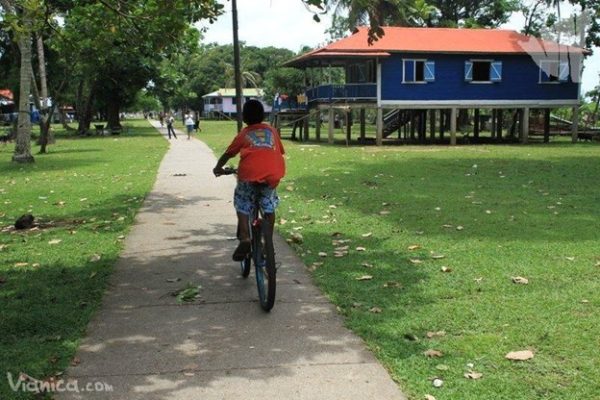
Hurricanes Iota and Eta forever changed the lives of hundreds of people in the indigenous territories of Nicaragua’s Northern Caribbean Coast. Dozens had to leave their lands.
“We had to evacuate, and when we returned to the community, we were surprised to find nothing, the only thing we had was the clothes we were walking around in. My mother was crying when she couldn’t find her house,” recalls ‘Elea’, a 19-year-old Miskitu fisherwoman, like the rest of the women in the area.
‘Elea’ is afraid, so she asks us to protect her identity. Similarly, when consulted for this report, community leaders and organizations that watch over the rights of the people of the Caribbean Coast asked not to be quoted for fear of reprisals by the Ortega Murillo regime, whose local presence is tangible through the Sandinista Leadership Committees (CLS), they explain.
These party bodies monitor the population, reward those who support the ruling FSLN with material assistance, while punishing those who denounce any outrage or irregularity, leaving them out of the aid programs. “Elea” explains that the latter is the case for her family, who do not sympathize with the ruling party.
The Miskitu also fear the settlers who attack and invade their communities, and who are accused of having relations and sympathies with officials of the regime in some cases, according to several newspaper reports.
Local human rights organizations are keeping silent on issues in order to protect themselves. They fear that the same regime, which considers these types of organizations enemies, will eliminate them as happened to 61 organizations that were outlawed since the socio-political crisis broke out in April 2018. “Don’t quote us, because they are after us,” says an activist in the area.
In addition, there is a widespread fear of talking to independent media in the country, founded on cases of people who have been imprisoned in recent months and besieged by the regime after offering their opinions and statements to journalists.
For all these reasons, in addition to the historical abandonment by the state and by the populations of Central and Pacific Nicaragua, fear and reticence persist among the Miskitu community. However, some agree to tell their testimonies in the hope of being seen and taken into account.
The ravages of climate change
Hurricanes Iota and Eta, category 4 and 5 respectively, hit Nicaragua’s Autonomous Region of the Northern Caribbean Coast (RACCN) in November 2020, almost two weeks apart.
Iota made landfall on November 16, near the Haulover community, about 25 kilometers south of where Eta also made landfall on November 3. The Miskitu territory was the most affected by both hurricanes, especially Prinzu Auhya Un.
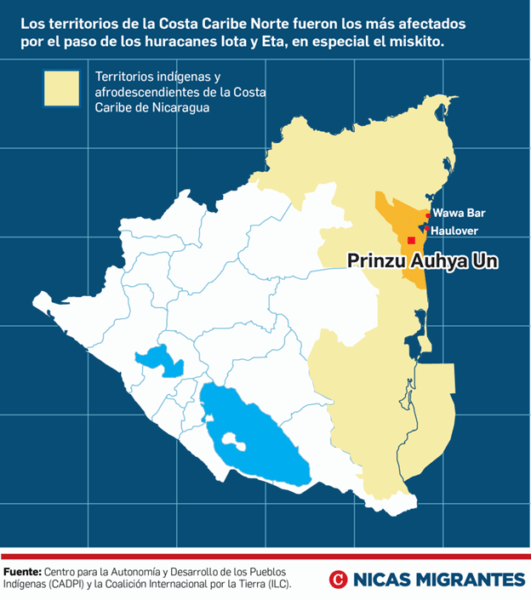
“The Caribbean Coast of Nicaragua has been prone to experience hurricanes, but two hurricanes with the same trajectory and almost the same magnitude had not passed through the area before”, comments the head of the Department of Synoptic and Aeronautical Meteorology of Costa Rica, Eladio Solano, which is why he considers that it is a phenomenon attributable to climate change.
According to information from Nicaraguan authorities, some 63,000 people throughout the country were transferred to 683 shelters before and in the wake of the violent storms, including “Elea”. Eta and Iota left Nicaragua with at least 21 deaths, 160,000 refugees and an estimated US $742 million in losses, according to official reports.
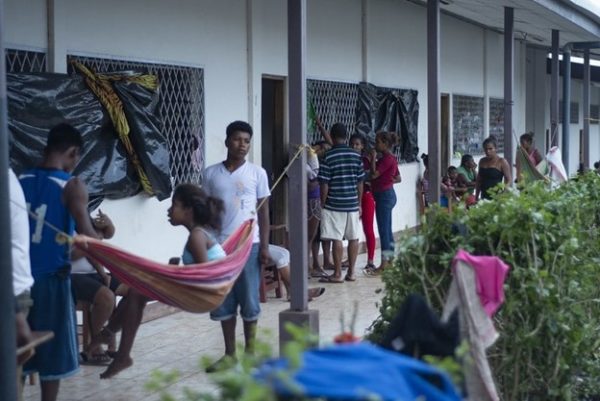
Nine hundred indigenous families lost everything
Around 380 indigenous and Afro-descendant Nicaraguan communities were affected, especially the Miskitu. Haulover and Wawa Bar were completely destroyed, some 900 families were left homeless and without means of work, according to community leaders of the Northern Caribbean Coast.

“The fish no longer come out, the soil is destroyed, we are hungry, we have no house. Nobody helped my mother, she is alone,” says “Elea”.
Hurricanes have a considerable impact on marine fauna and some organisms migrate to deeper waters when their habitat is modified, explains Juan Jose Alvarado, marine biologist at the Center for Marine Science and Limnology Research of the University of Costa Rica (UCR).
In addition, when hurricanes have intense magnitudes, they tend to break reefs that take years to recover. This explains the scarcity of fish and marine organisms that affects local people.
That slow recovery occurs both in and out of the water. Rebuilding the community from scratch was hard, says “Elea”. “We picked up the rubble and other Miskitu gave us plastic to make a tent,” she says. It took six months for the soil to solidify after the floods, which prevented them from growing food. “The well water was contaminated and we had to drink sea water. There was a lot of disease and hunger,” he adds.
The Nicaraguan State received around 600 million dollars in donations and loans to assist the affected populations, according to a study by the Observatorio Pro Transparencia y Anticorrupción (Observatory for Transparency and Anticorruption).
Miskitu deputy Brooklyn Rivera confirmed “the secrecy with which the central government handled the donations. Almost nothing is seen in terms of work in the damaged communities such as Haulover, Wawa Bar, Waunhta, Layasiksa, Lapan, Klinhna, Karata… after a year after the hurricanes, they are there just as when they were devastated, there has not been a minimum of construction or reconstruction effort”, cites the study.
The Nicaraguan government announced some plans to restore the areas affected by the hurricanes, but community leaders claim that most of the humanitarian assistance was provided by non-governmental organizations. “What came from the government has been administered by the CLS”.
Most of the inhabitants of Wawa Bar and Haulover still live in makeshift tents and many of the wells are contaminated, they collect water in containers donated by local churches using filters to purify it, and the zinc sheets of the “Plan Techo” organization were given to the relatives of the CLS in the area, the leaders say.
Many Miskitu are resisting in their lands of origin, some decided to move to nearby places and others opted to leave the country. “Elea” first moved to Puerto Cabezas in search of work to support her family, but months later migrated to Costa Rica.
Leaving after the storms
“Elea” is 19 years old and the sixth of nine siblings, two with cognitive and motor disabilities. Their mother has raised and supported them on her own thanks to fishing, but after the hurricanes, no matter how many times they submerged them, the pots came up empty.
At the beginning of 2021, “Elea” looked for work in Puerto Cabezas cleaning houses and washing clothes, but she was not paid with money but with dishes, medicine and clothes for her and her family, until one day a person gave her 2000 córdobas (about 56 dollars) with which she decided to migrate to Costa Rica to save up to rebuild her house.
The journey has been the longest and most painful she has ever experienced, she says, because she had never been so far from her community before, nor had she been separated from her mother for so long. At six o’clock in the afternoon on Friday, August 5, “Elea” left on a bus from Puerto Cabezas to Managua.
From the capital, she headed to San Carlos and from there to the Los Chiles border post. When she crossed into Costa Rica, she made the trip on foot because she had little money. Amidst fear, uncertainty and after more than 24 hours of travel, she managed to reach her destination. “I traveled alone, no one spoke Miskitu and I had nothing to eat. When I came here (to Costa Rica) I talked to a friend, also Miskitu, so that she would give me a place to stay,” she says.
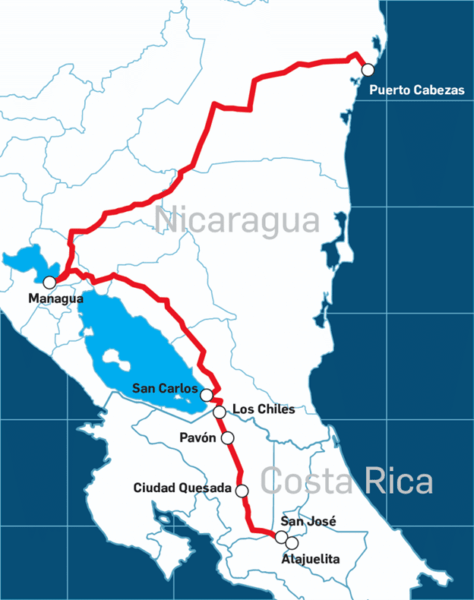
The indigenous population of the Caribbean Coast do not usually migrate to distant countries or territories for economic reasons or because of natural disasters. If they have done so, it has been for some political conflict, says Marvin Meza, coordinator of the Miskitu Indigenous Group and the Caribbean Coast in Costa Rica.
“The first migratory wave was due to the “Red Christmas” massacre that took place in the 1980’s, when many indigenous people crossed into Honduras and stayed there creating a community,” says Meza, referring to the forced relocation of 42 indigenous communities of the Caribbean Coast by the Sandinista Popular Army in December 1981.
In the following decades, some Miskitu have left due to the invasion of settlers, mostly into Honduran territory, but rarely had they moved to the southern neighbor, Costa Rica. “The other strong wave was as a result of the political context of 2018 due to increased persecution and repression by settlers for our indigenous people”, notes Meza.
After the passage of hurricanes Iota and Eta the migrations and displacements have increased. “It was not common to see a Miskitu say they were going to leave the country or leave their land. Now you hear it more often, because the conditions for us to work have been limited,” says a Miskitu community leader.
A Miskitu settlement on the outskirts of San José
“The Miskitu community has always been united, they take care of and protect each other”, says Keyla Chow, coordinator of the organized bloc of the Nicaraguan Caribbean Coast in exile.
This union is materialized in a settlement located in Alajuelita, a district of San José, the capital of Costa Rica. In a semi-rural area and with a luxurious view of the entire city, a Miskitu community has been formed where some 25 families live, which, in turn, have given shelter to more than a hundred indigenous people who have come to the country to take refuge, such as “Elea”.
Like this one, there are other precarious settlements where indigenous Nicaraguans have settled, but the most recognized are in Pavas, Alajuela, La Carpio and Purral de Guadalupe.
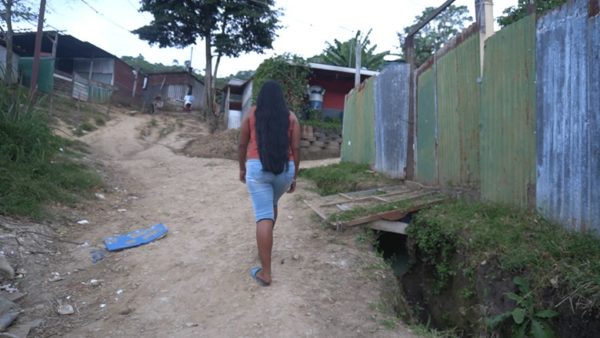
As a way of living and preserving their roots, the houses here are made of wood, some of them keep the structure of the stilt houses typical of the Caribbean Coast, while the Miskitu language is heard everywhere.
Given that it is an informal settlement, water has not yet arrived, so the villagers go down three times a week to collect water from pipes located at the entrance of the place.
According to the census conducted by leaders of the Nicaraguan indigenous communities, there are more than 600 Miskitu living in Costa Rica as of 2018, but the increase began to be noticed in 2021.
Costa Rica’s General Directorate of Migration and Aliens does not contemplate the ethnicities of the people applying for any migratory status in its records, it only collects information on their nationality, sex and age. However, the Directorate of Integration and Human Development – belonging to the same institution – records that, in 2021, they attended some 220 Miskitu people who were provided with information on how to make immigration applications.
Language is one of the biggest limitations. “Migration does not have a Miskitu translator. The communication and notification they issue to follow up on cases is in Spanish. And we must also recognize that not all of our community can make use of technology or have the economic possibilities to manage a cell phone, when they barely have enough to eat,” says Chow.
This is the case of “Elea”. “I understand and speak very little Spanish, and only Spanish is spoken here. Many times this has been an obstacle, because it is difficult for me to communicate with people when I go to look for work. As soon as they see or hear me, they don’t accept me,” she says.
For the time being, she has found an informal job. Once a week she takes care of a little girl and does chores in a house where she is paid five thousand colones (about eight dollars). “I have been thinking about returning, but finding this ‘chamba’ (job) gave me hope, and even though I am in need I can send something to my mother, so I am still looking for work,” says “Elea”.
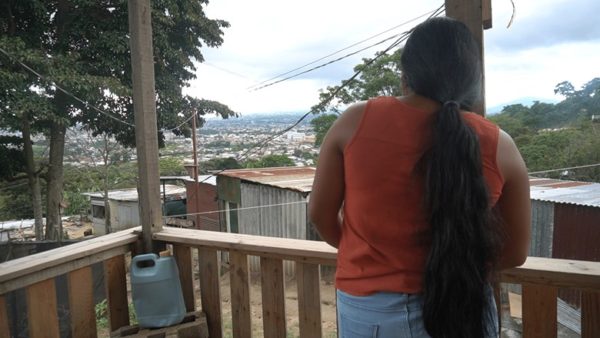
Proposal to create a category for climate change refugees in Costa Rica
Although the Convention Relating to the Status of Refugees (1951) and the United Nations do not legally recognize climate migrants, i.e. people who are forced to migrate due to climate change, in Costa Rica a reform was presented at the end of 2021 to include them in its migration laws.
In December 2021, in the Costa Rican Legislative Assembly, a bill was presented that seeks to grant refugee status to people displaced by events related to climate change.
“This proposal would come to fill a big gap within the refugee status and would help people who are forced to migrate after the passage of hurricanes. This situation has exacerbated the needs of a population that has suffered from land dispossession and constant threats from settlers and state insecurity that echoes even in the area,” says activist Chow.
Can the Miskitu community cope with the consequences of climate change while suffering from settler invasions in a country mired in a socio-political and economic crisis?
Community leaders and international organizations that advocate for the rights of the indigenous communities of the Caribbean Coast view this complex situation with concern, and it is likely that this migration is no longer unusual.
The human rights crisis faced by these communities due to the invasion and violent dispossession of their lands by settlers, the national socio-political crisis as of 2018, a deteriorating economy, along with the destruction that the hurricanes left in their wake, leaves indigenous populations with very few options, in the midst of precariousness and marginalization, forcing them to live far from their lands, in a hostile society and performing activities with minimal remuneration.
On the Caribbean Coast, the Miskitu community is seeking alternatives to preserve their territory and cope with the ravages of climate change. At the moment they are planting mangroves with support from the University of the Autonomous Regions of the Nicaraguan Caribbean Coast (URACCAN). Biologist Alvarado also advises accelerating the recovery of the reefs by planting and reestablishing corals and creating fish nurseries.
The Ministry of Environment and Natural Resources (Marena) presented a guide for environmental restoration in 2021, with the objective of restoring forests and ecosystems found on the Caribbean Coast, but community leaders say they have not seen or heard of such projects.
From Costa Rica, “Elea” and the Miskitu community that has formed there are hoping to settle in a dignified manner and have the means to send help to their own, despite the difficulties they face due to the language barrier, an unfamiliar culture and unemployment. “In addition to the hurricanes we have experienced a lot of suffering. Massacres, diseases, few crops and fish, and the problems still remain the same in my community,” says Elea, adding: “that’s why I have to support my mother and I don’t give up on getting a job, I have faith in God that someday I will have one. I just want them to remember that I am a person.”
Translation by Confidencial
Read more from Nicaragua here on Havana Times.





